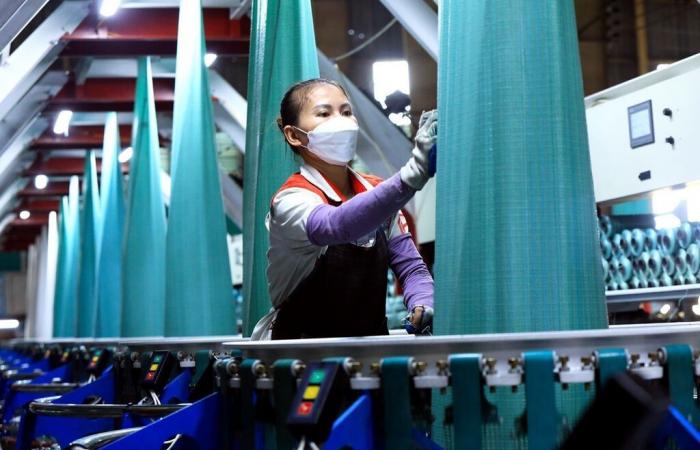>> The recovery of the textile and clothing sector is on track
>> Textile exports up 6.19% in eight months
>> The textile and clothing sector presents growth prospects
| The Vietnamese textile and clothing industry is experiencing an encouraging recovery and presents growth prospects. |
| Photo : VNA/CVN |
The FDI sector plays a crucial role in the growth of this industry, accounting for 65% of its total export turnover.
According to VITAS, Vietnam’s textile and clothing industry is seeing a sharp increase in FDI inflows, with many large companies investing in the construction of modern factories.
Countries and territories investing heavily in Vietnam in this area include the Republic of Korea, China, Japan, India and Taiwan (China).
At the end of September, Sanbang LLC of Singapore started construction of its DTY towel, fabric and yarn production plant in the Rang Dong textile industrial zone, northern Nam Dinh province, with a total investment of 673.5 billion VND ( almost 30 million USD). Covering an area of 103,400m², this factory is expected to be officially operational in the fourth quarter of 2025, creating numerous jobs for local workers.
In addition, several other major projects are underway, including a textile dyeing factory worth USD 203 million invested by the Top Textiles sarl under the Japanese group Toray in the Rang Dong textile industrial zone.
In February this year, Nam Dinh provincial authorities granted an investment license to Crystal International Group of Hong Kong (China) to develop Yi Da Denim Mill LLC, with a total investment of nearly 60 million ‘USD.
In March, Weixing Group’s SAB Vietnam LLC inaugurated a USD 62 million factory producing clothing accessories in the Bim Son industrial zone in Thanh Hoa (Central) province.
Vietnam’s participation in free trade agreements (FTAs) such as the Comprehensive and Progressive Agreement for Trans-Pacific Partnership (CPTPP), the EU-Vietnam FTA (EVFTA) and the Regional Comprehensive Economic Partnership (RCEP), also helps the countries to expand export markets for textile and clothing products.
| Vietnam should look for ways to promote linkages between FDI companies and domestic companies to further develop the textile and garment auxiliary industry. |
| Photo : VNA/CVN |
According to VITAS Secretary General Truong Van Cam, thanks to international integration efforts and effective foreign investment attraction strategies, the textile industry has become attractive to foreign investors, thereby helping to improve production capacity. and the scale of exports.
Experts said Vietnam should look for ways to promote ties between FDI companies and domestic companies to further develop the textile and garment auxiliary industry.
Particular attention should be paid to the development of technical standards and regulations related to environmental protection and energy saving, thereby creating a solid basis for the sustainable development of this industry, experts said.
Vietnam is the world’s third largest textile exporter, after China and Bangladesh. Positive signals for 2024 show that the sector’s export turnover is expected to exceed the target of USD 44 billion this year.
VNA/CVN







